Aikido BooksA Selection of Aikido Literature ReviewedThere is an abundance of aikido literature today. Many book titles are so much alike that it's hard to tell them apart — also sometimes when reading them... Here I present and comment a selection of them. Below I have selected a number of aikido books through a very subjective filter — my own preferences. These are the ones I can recommend, for reasons that I try to explain in the accompanying reviews. There are also links to Amazon and other places where these books can be found. We all agree that aikido can't be learned from books, but they help us contemplate the process of learning by doing.
Stefan Stenudd
Budo Teachings of the Founder of Aikido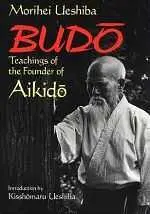 by Morihei UeshibaMorihei Ueshiba didn't write any kind of "aikido complete" book, but this text from the 1930s has got all of his overwhelming characteristics: comprised, visionary, and not so easy to comprehend — but inspiring indeed. John Stevens, a longtime aikido practitioner and resident in Japan, made the translation and editing. A great number of instructive photos with Osensei from the 1930s are also included. So is a thorough text on Osensei's life, written by his son Kisshomaru Ueshiba.This book isn't easily digested, but Osensei's explanations of his techniques are worth the effort. It's a splendid reference for any aikido practitioner. Morihiro Saito frequently used the Japanese original of this book to prove his points about the proper way of doing the aikido techniques, even observing closely the angles of Osensei's feet in the photos. Indeed, the book is a splendid source for aikido fundamentals.
Abundant Peace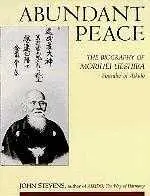 The Biography of Morihei Ueshiba, by John StevensJohn Stevens, who lived for many years in Japan and practiced mostly for the old nobleman Shirata Rinjiro, has written a very readable biography of Osensei's life and deeds, including many pictures and picturesque anecdotes — some of which have been questioned, especially by those who are convinced they know better.A biography of someone as legendary as Osensei is almost impossible to keep factual, especially since all his students were so amazed by him. John Stevens also got carried away, occasionally. That's obvious in the book, but without that fascination it would not be a fair portrait of Osensei. So, although much in this biography is not to be taken literally, it offers a wonderful story about a wonderful man.
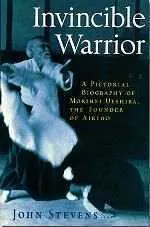 Later on, John Stevens made a new version of his Osensei biography, called Invincible Warrior — A Pictorial Biography of Morihei Ueshiba, the Founder of Aikido. I's a somewhat polished version with additional photos and texts, but I sort of miss the excited naivety of the original version. Still, it contains some new material of interest to those who want to learn about Osensei in great detail. Later on, John Stevens made a new version of his Osensei biography, called Invincible Warrior — A Pictorial Biography of Morihei Ueshiba, the Founder of Aikido. I's a somewhat polished version with additional photos and texts, but I sort of miss the excited naivety of the original version. Still, it contains some new material of interest to those who want to learn about Osensei in great detail.
Aikido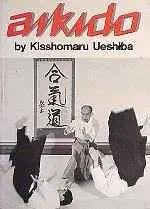 by Kisshomaru UeshibaThis was one of the very first aikido books I got, when I had started my aikido quest in the early 1970s. I devoured it. Almost 40 years later, I'm still quite fond of it — especially the short, very esoteric text by Osensei at the end of it.Kisshomaru Ueshiba was Osensei's son and succeeded him as doshu of aikido. He wrote this introduction to aikido in 1963, but the translation was done some ten years later. It contains straightforward explanation of aikido techniques, with many photos where young Tamura and Chiba appear as uke. Although it's nearly impossible to explain aikido techniques in a book, Kisshomaru Ueshiba was remarkably close to managing it. But still, the true diamond in the book is Osensei's short text. It has inspired me ever since I read it the first time, when I was a teenager completely inebriated by aikido. You have to read it.
Aiki News Encyclopedia of Aikido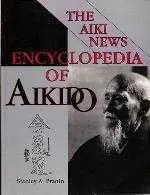 by Stanley PraninStanley Pranin lived a number of years in Japan, where he practiced aikido (mainly but not only for Morihiro Saito) and ran the first significant aikido magazine: Aiki News (later renamed Aikido Journal). He worked extremely hard at documenting the history of aikido, interviewing just about every instructor in Japan and collecting old films of Osensei.He put his vast knowledge into this encyclopedia, which was at the time a veritable fountain of aikido facts — especially regarding aikido teachers of any significance. The book was originally published in 1991, a bunch of years before Internet, Wikipedia and all that. At the time it was a completely unique compilation, surprisingly trustworthy in spite of the difficult task at that time of getting all the facts right. Now we have the web, but Pranin's book still holds its ground as a source to knowledge about aikido and its many pioneers. By this feat of his, Pranin can count among them.
Aikido Masters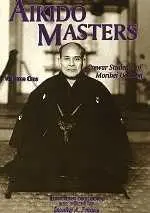 by Stanley PraninAs mentioned above, Stanley Pranin has done a great service to future aikido historians by interviewing most of the important pre-war aikido students of Osensei, such as Gozo Shioda, the kendo legend Nakakura, and many others. They often give generously open-minded answers, always with a lot of fascinating information about Osensei and those days long gone.Initially, Pranin made these interviews for his pioneering aikido magazine Aiki News. When he had a bundle of them, he was pretty much obliged to bring them together in a book. I'd say that this book, with so much wisdom from the first generation of Osensei students, is a must read for any aikido practitioner. It's a joy, too.
Aikido in Daily Life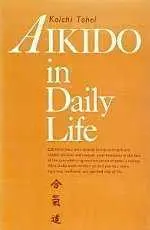 by Koichi ToheiKoichi Tohei was leading Hombu Dojo and the spread of aikido in the world together with Kisshomaru Ueshiba, before leaving to form his Ki Society. In 1966, while still in Hombu and the Aikikai, he wrote this charming book about aikido, ki and everyday living. It was reprinted many times, and it was worth it — his writing here is modest, pensive and delightful.If I remember correctly, this was the very first aikido book I bought, although imported literature cost a fortune in those days. I never regretted it. Tohei's friendly advice on how to exercise one's ki and relate to life in general was eye-opening, to a large extent exactly because of his benevolent attitude. The reading experience was as pleasant as with, say, Winnie the Pooh or The Little Prince.
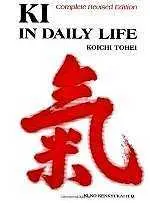 Upon leaving Aikikai to form his own organization of ki-aikido, Koichi Tohei wrote several books about ki applications — in aikido as well as outside of it. Among them was a new version of his old book's theme, this time called Ki in Daily Life. Strangely, because of his focus on the subject of ki, after his departure from the Aikikai many of the other instructors seemed to shun the subject — although it was definitely essential in Osensei's aikido. Fortunately, Tohei's treatment of ki is adequate and accessible through his books. Upon leaving Aikikai to form his own organization of ki-aikido, Koichi Tohei wrote several books about ki applications — in aikido as well as outside of it. Among them was a new version of his old book's theme, this time called Ki in Daily Life. Strangely, because of his focus on the subject of ki, after his departure from the Aikikai many of the other instructors seemed to shun the subject — although it was definitely essential in Osensei's aikido. Fortunately, Tohei's treatment of ki is adequate and accessible through his books.
Kototama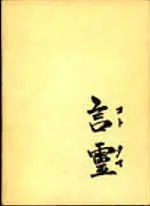 by Masahilo NakazonoNakazono, the great aikido and judo teacher, was a legend both in Europe, where he stayed until the early 70s, and in the USA, where he remained until he passed away in 1994. He stopped aikido almost completely to concentrate on kototama instead, a subject he was exceptionally familiar with.This book, unfortunately hard to find, has the subtitle Messiah's Return, the Hidden Kototama Principle and was published in 1972. It's a very good introduction to kototama, certainly not easily penetrable but more so than many others. He wrote a number of short books and brochures on the same subject. I got the book back in the 1970s, probably from my aikido teacher Ichimura who was deep into kototama in those days, and he had been very impressed by Nakazono's insights into this and other subjects. I also translated a leaftlet introduction to kototama by Nakazono into Swedish, upon Ichimura's request. We all studied his thoughts back then and grieved the fact that he stopped with aikido.
The Essence of Aikido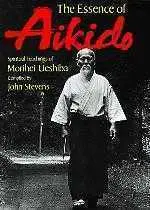 by John StevensIn this book, John Stevens has gathered what he calls the spiritual teachings of Morihei Ueshiba. That's no overstatement. Stevens is not altogether convincing when explaining kototama and other abstract planes behind Osensei's aikido — but still, this is interesting reading for an in-depth study of aikido.Also, the book contains a lot of Osensei's expressive calligraphy (shodo), as well as a number of short poems (doka) of his, most of them about aikido and budo from an elevated and inspired perspective. The doka are translated into English by Stevens, and that can't have been an easy task. I've heard that some of his interpretations are questionable, but that's true for any translation of poetry. For those who want to make up their own mind, the Japanese versions are included alongside the English ones. John Stevens has a tendency of publishing the same material over and over, so there are some reruns in most of his books. But this is one of the most fascinating, because of the profundity of the Osensei material included. Just the calligraphies are worth hours of contemplation.
The Spirit of Aikido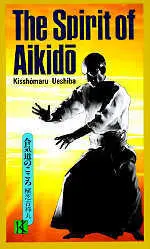 by Kisshomaru UeshibaIn this book, Kisshomaru Ueshiba, the previous doshu of aikido, presents some of the principles and philosophy of aikido, in a clear and concise way.On the other hand, I don't feel that the book plunges very deeply into the aikido mysteries, nor am I always convinced by his explanations. For example, I have some objections to his views on Taoism and the thoughts of Lao Tzu. Well, I would, having written books about it myself. Still, old doshu's book is pleasant to read and it's interesting to see into the mind of the person who was so instrumental in spreading aikido over the world. He lived in the shadow of his father, the founder of aikido, but I was always impressed by his own aikido skills as well as his persistence with a job he had happened to inherit.
Aikido and the Dynamic Sphere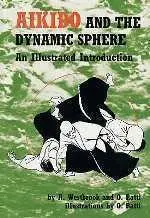 by Adele Westbrook and Oscar RattiWestbrook and Ratti divided the work on this aikido classic, which was produced when they were fresh shodan. The former did the writing — of which I am not too impressed — and the latter made the wonderful drawings. I'm certain that these charming pictures, full of aiki vigour, made the book a constant best seller.Oscar Ratti's elegant ink drawings have been copied and pirated massively — already long before the Internet made it so easy. When you leaf through the book you see why. Even people who have never experienced aikido will be charmed by it through his images. It's a pity that the text is no way near as captivating. But Ratti's artwork makes up for it, and then some.
The Language of Aikido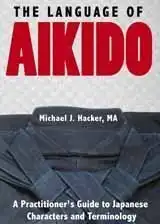 by Michael J. HackerMichael J. Hacker has recently (2017) published a book about the language of aikido, where he explains its terminology and analyzes its kanji characters. It is an interesting read for any aikido student. Not only does it unravel what the words and expressions mean, but just as importantly: what they don’t mean.Click the header to read more about it.
|
My Aikido BooksClick the images to see the books at Amazon (paid link).
Basic Concepts of the Peaceful Martial Art. The basic principles, philosophy and traditional budo concepts in aikido. |
AIKIDO PRACTICE
Introduction
Aikido Techniques — all the basic moves
Attacks in Aikido
Ikkyo Complete |
Kotegaeshi |
Nikyo |
Tenchinage |
Sankyo |
Kokyunage |
Yonkyo |
Koshinage |
Shihonage |
Kokyuho |
Iriminage |
Suwari kokyuho |
Tantodori — knife defense
Aikiken — aikido sword techniques
Jo 31 Kata in four directions
Aikibatto sword and staff exercises
Aiki — joining energies
Ki exercises
Aikido Video Clips
Aikido Photos
My aikido dojo in Malmö, Sweden
My aikido seminars
AIKIDO THEORY
My Aikido Bio
Aikido Glossary
Tanden, the Center
Aikido Inks
Aikido as Self-Defense
Running a Dojo
Aikido is True
Osensei and Einstein
AikiWeb Columns
Aikido Books Reviewed
Die deutsche Version meines Aikido-Buches online
Aikido på svenska
About Cookies
My Other Websites
CREATION MYTHS
Myths in general and myths of creation in particular.
TAOISM
The wisdom of Taoism and the Tao Te Ching, its ancient source.
LIFE ENERGY
An encyclopedia of life energy concepts around the world.
QI ENERGY EXERCISES
Qi (also spelled chi or ki) explained, with exercises to increase it.
I CHING
The ancient Chinese system of divination and free online reading.
TAROT
Tarot card meanings in divination and a free online spread.
ASTROLOGY
The complete horoscope chart and how to read it.
MY AMAZON PAGE
MY YOUTUBE AIKIDO
MY YOUTUBE ART
MY FACEBOOK
MY INSTAGRAM
MY TWITTER
STENUDD PÅ SVENSKA

Stefan Stenudd
About me
I'm a Swedish author of fiction and non-fiction books in both English and Swedish. I'm also an artist, a historian of ideas, and a 7 dan Aikikai Shihan aikido instructor. Click the header to read my full bio.
 Basic Concepts of the Peaceful Martial Art. The principles, philosophy, and basic ideas of aikido. It's not about the aikido techniques, but the thoughts and ideas behind them. You could call it a book on aikido theory. It was my first book, initially in
Basic Concepts of the Peaceful Martial Art. The principles, philosophy, and basic ideas of aikido. It's not about the aikido techniques, but the thoughts and ideas behind them. You could call it a book on aikido theory. It was my first book, initially in 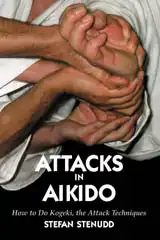 How to do kogeki, the attack techniques. All the attack techniques in aikido explained, and how to do them correctly. This is an often neglected field in aikido training. We focus on the aikido defense techniques but forget to learn the attacks properly — but then the development of our aikido skills will suffer. So, I wrote this book. As far as I know, it's the only one on the subject.
How to do kogeki, the attack techniques. All the attack techniques in aikido explained, and how to do them correctly. This is an often neglected field in aikido training. We focus on the aikido defense techniques but forget to learn the attacks properly — but then the development of our aikido skills will suffer. So, I wrote this book. As far as I know, it's the only one on the subject.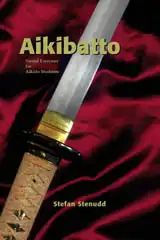 Sword and staff exercises for aikido students. I developed a comprised system of sword and staff exercises (aikiken and aikijo), initially for my own students to get familiar with these things. Other aikido students seemed to appreciate it, so I made this book. The exercises are explained in detail, with practical and spiritual aspects of the sword arts, how to teach them, equipment for training, and more.
Sword and staff exercises for aikido students. I developed a comprised system of sword and staff exercises (aikiken and aikijo), initially for my own students to get familiar with these things. Other aikido students seemed to appreciate it, so I made this book. The exercises are explained in detail, with practical and spiritual aspects of the sword arts, how to teach them, equipment for training, and more. Ki, the life energy, is a very important aspect of aikido. This is evident already in the name of this martial art. It's the same as the Chinese concept qi (also spelled chi or ch'i). Although essential in many ways, far from all aikido students know how to deal with it and integrate it in their training. Therefore, I wrote this book explaining ki, with several simple basic exercises on how to awaken, increase, and use the life energy.
Ki, the life energy, is a very important aspect of aikido. This is evident already in the name of this martial art. It's the same as the Chinese concept qi (also spelled chi or ch'i). Although essential in many ways, far from all aikido students know how to deal with it and integrate it in their training. Therefore, I wrote this book explaining ki, with several simple basic exercises on how to awaken, increase, and use the life energy.